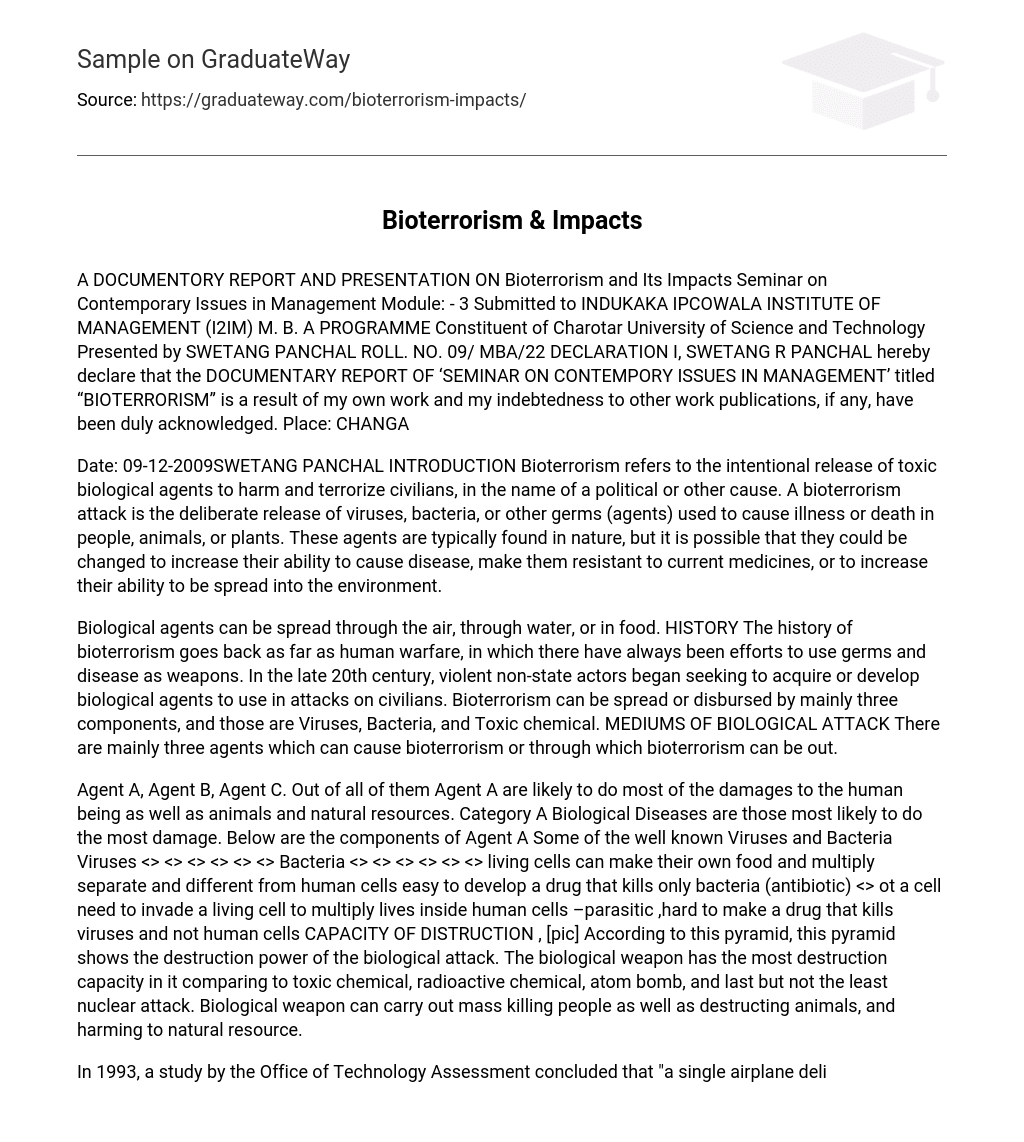INTRODUCTION
Bioterrorism refers to the intentional release of toxic biological agents to harm and terrorize civilians, in the name of a political or other cause. A bioterrorism attack is the deliberate release of viruses, bacteria, or other germs (agents) used to cause illness or death in people, animals, or plants. These agents are typically found in nature, but it is possible that they could be changed to increase their ability to cause disease, make them resistant to current medicines, or to increase their ability to be spread into the environment. Biological agents can be spread through the air, through water, or in food.
HISTORY
The history of bioterrorism goes back as far as human warfare, in which there have always been efforts to use germs and disease as weapons. In the late 20th century, violent non-state actors began seeking to acquire or develop biological agents to use in attacks on civilians. Bioterrorism can be spread or disbursed by mainly three components, and those are Viruses, Bacteria, and Toxic chemical.
CAPACITY OF DISTRUCTION
According to this pyramid, this pyramid shows the destruction power of the biological attack. The biological weapon has the most destruction capacity in it comparing to toxic chemical, radioactive chemical, atom bomb, and last but not the least nuclear attack. Biological weapon can carry out mass killing people as well as destructing animals, and harming to natural resource.
In 1993, a study by the Office of Technology Assessment concluded that “a single airplane delivering 100 kilograms of anthrax spores by aerosol on a clear, calm night over Washington D. C. , could kill up to 1 to 3 million people in a three hundred square mile area surrounding Washington D. C. Creating biological weapon need not much investment. All you need is just some biotechnologist scientists, Samples of some viruses, bacteria, some biological toxins.





